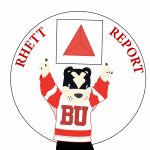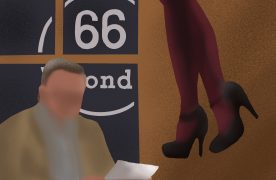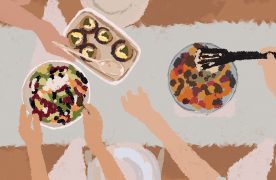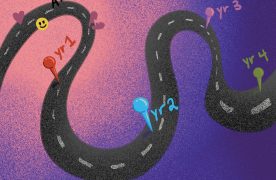I don’t know about you, but I love drinking glycerol ester of wood rosin. Just mix some of that up with brominated vegetable oil and carob bean gum, and you’ve got what nutritional experts call “a taste sensation.”
As I write these words, I’m drinking down some brominated vegetable oil (using a straw, so I can still type) in the form of Fresca, the sugar-free soda made by Coca-Cola. The three flavorful ingredients above are the last ones listed on the side of the bottle.
You might be a little surprised to find out that there may be wood in your soda. But to be fair, where does it say “wood-free” on the packaging? All it says on my bottle is “Sparkling Flavored Soda with Other Natural Flavors.” The fact that one of those natural flavors happens to be tree doesn’t make Fresca any less delicious.
It’s hard to blame them for failing to advertise soda’s wood content anywhere else on the label. After all, no matter how good an ad campaign is, packaging is always a product’s last line of defense – its last chance to get you to make the snap decision to pick it up. How many children would scream at their parents to get them some Lucky Charms if the box didn’t have the leprechaun on the outside, holding some “enlarged to show texture” marshmallows?
Just as Lucky Charms is an important part of a balanced breakfast, packaging is an important part of a successful sales campaign. So it really makes me mad when companies try to mislead me right there on the product itself.
Despite containing carob bean gum, Fresca is real soda, just like it says on the bottle. Sodas are reliable that way. With fruit juice, on the other hand, you have to be on your guard. A bottle that looks like juice, has pictures of fruits on the label and is billed as “Strawberry-Kiwi” may very well not be juice. If you read the fine print, it may actually be “juice product,” an alias for sugar water with the liquid equivalent of a half of a strawberry mixed in. You can find out exactly how much of what you’re drinking is juice (and how much is “product”) by looking above the “Nutrition Facts” label. If the notice says anything less than “100% juice,” odds are the two primary ingredients of the product are water and corn syrup (a form of sugar).
Sports drinks, such as Gatorade or Powerade, are also basically sugar water, but they have two big differences from juice products. First, sports drinks don’t always explain what they’re supposed to taste like. Among the flavors I have seen are “Arctic Shatter,” “Tropical Intenso” and “Riptide Rush” (which I believe is made with concentrated riptide).
The second difference is that sports drinks claim to be thirst quenchers with electrolytes and carbohydrates. Apparently, Gatorade and Powerade have very specific formulas that help athletes recover after losing a lot of body fluids through sweat. For anyone else, however, the extra electrolytes and carbohydrates the bottle promises just translate to added salts and sugars. They may quench your thirst, but they’ll also increase your weight.
When people want something to drink without all the added sugar, they reach for some water — nature’s thirst quencher. Scientists tell us that water is an odorless, tasteless liquid comprised of two hydrogen atoms bonded to one oxygen atom. But I’m talking about the other type of water, the kind with “refreshingly crisp flavor” that comes in a bottle.
Bottled water usually costs about $1.50 for 20 ounces, so you would think that it must be worlds better than tap water, which is almost free. You would draw the same conclusion from looking at the bottles themselves. Their labels frequently show pictures of mountains or streams, with the implication that these are the sources of the water you’re about to drink. Most of the time, the label will claim that the water inside is “natural” or “purified,” leading you to believe that its contents are pure, 100 percent H2O.
But despite the glittery packaging, buying bottled water is a waste of your money. Tap water (in most of the United States, and certainly in Boston) is just as safe as bottled water: Safety standards are actually higher for tap than for bottled water because the Environmental Protection Agency monitors municipal water systems. The Coke and Pepsi companies know this. That’s why Dasani and Aquafina, their water brands, are nothing more than purified tap water.
Do your wallet a favor and don’t waste money on water. If you don’t like the taste of tap, be smart and get yourself a filter (it’s not that expensive, especially compared to the high cost of bottled water) and a reusable container.
Your sink probably doesn’t have pictures of mountains on it. If it did, though, it would mean nothing more than the labels on the drinks people buy already.
Aaron Segal, a junior in the College of Arts and Sciences, is a weekly columnist for The Daily Free Press. He can be reached at aaronak@bu.edu.
This is an account occasionally used by the Daily Free Press editors to post archived posts from previous iterations of the site or otherwise for special circumstance publications. See authorship info on the byline at the top of the page.













